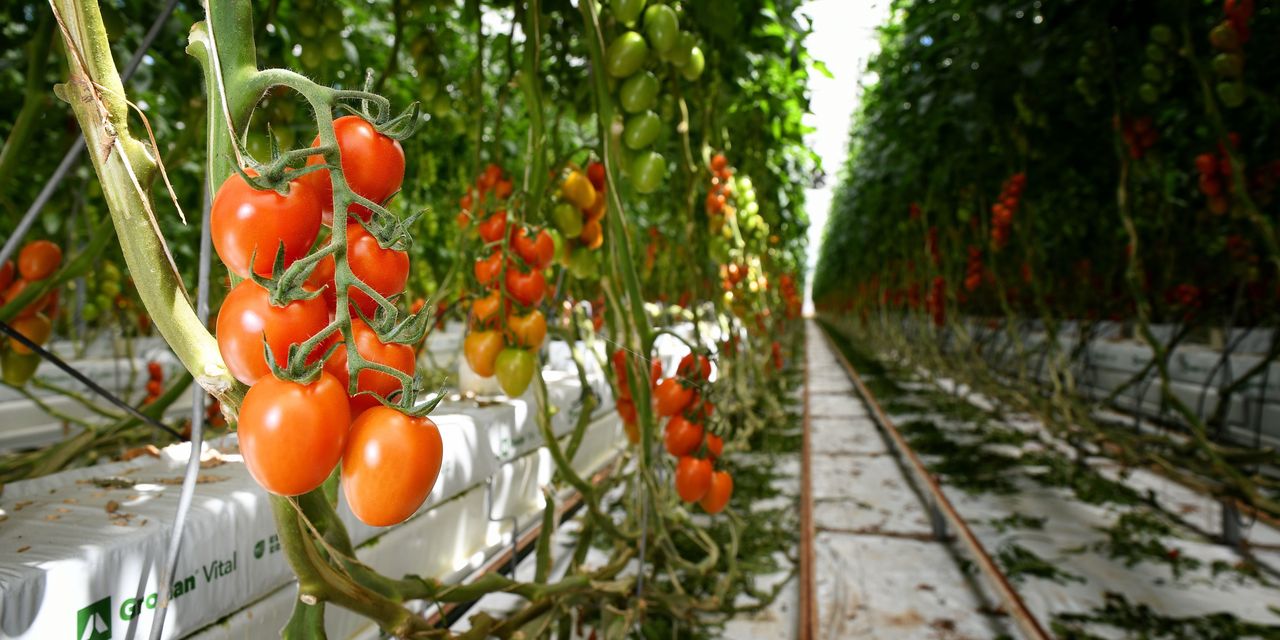
If you’re having a salad for lunch today, chances are it comes from the “Salad Bowl of the World,” the lush farmland that stretches for some 90 miles across California’s Salinas Valley. Lettuce, spinach, tomatoes, broccoli, strawberries, celery, cauliflower and more grow in abundance there, a source of pride and profits for farmers who work the land.
But none of it would be possible without water, and that’s the problem. The Salinas Valley is at the epicenter of a multi-year drought that’s as bad as it has ever been. Vegetables are a commodity, and as water grows scarce, price shocks could follow.
Here’s an ominous example of scarce: California’s snowpack, on June 1, was 0% of its long-term average, according to the state’s Department of Water Resources. Zero.
That’s a big problem because melting snow provides roughly 75% of the state’s agricultural water. On top of that, rain is rare. The Valley typically gets about 15 inches per year; in the first six months of 2021, about a third of that has fallen, including just four-tenths of one inch of rain between April and June.
It’s not just Salinas Valley, of course. Farmers everywhere are feeling the pinch as water dries up. Gabriel Castenada, who manages Humberto Castañeda Produce in nearby Sonoma County, planted only 17 acres of crops this year — mostly heirloom tomatoes, cucumbers, corn and watermelon — instead of the usual 180 acres.
“We weren’t sure how much water we were going to get,” he said in an interview. “We have to be very conservative with every drop.”
Other growers are ripping up water-guzzling alfalfa plants and almond trees —California supplies 80% of the world’s almonds, a $6 billion industry. And ranchers practically everywhere are culling their livestock amid reports that 60% of the nation’s cow herd is now “in some level of drought or dryness.”
Is this the new normal? A combination of longer, more intense heat waves, less precipitation, and surging population growth in the West and Southwest — Arizona, Nevada and Utah were among the three-fastest growing states according to 2020 Census data — are straining water supplies across a vast area encompassing one-third of the continental United States. The latest map rendering by U.S. Drought Monitor shows “abnormally dry” to “exceptional drought” conditions stretching from the Canadian to Mexican borders, and everything west of the Rockies, including the entire, and heavily populated, West Coast.
Demographics and a changing climate are just two problems. Many of America’s water woes also result from years of under investment in critical infrastructure. With some exceptions, the nation’s 2.2 million mile network of underground pipes is so dilapidated that there’s a water main break in this country every two minutes. The American Society of Civil Engineers, which supplies this data point, says this costs us six billion gallons of treated water every day. That’s the daily equivalent of 18 gallons of water for every man, woman and child in this country. More on this in a moment.
Yet for all the talk about population growth, it’s essential to note that agriculture is the biggest consumer of ground and surface water in the United States, guzzling “approximately 80%” of the nation’s water use, and “over 90% in many Western States,” according to the U.S. Department of Agriculture.
What can be done? In the absence of more cooperation from mother nature — rain and more snow in the mountains — technology is helping. Out are massive water sprayers that span fields. In are “drip irrigation” systems, which reduce evaporation by delivering water straight to a plants’ roots.
And for some, but hardly all, crops, hydroponics may be the answer.
“The simplest way to think about (hydroponics) is that the roots of plants are in water instead of soil,” says Paul Lightfoot, founder and president of BrightFarms, an indoor grower of vegetables nationwide.
It’s a method that cuts water use by some 80%, he says, because it’s recirculated. “There’s no runoff, there’s no evaporation,” he says. The water stays in the “pond” (a shallow indoor pool, usually about 16 inches deep) where plants are grown. “So that’s how you use much less water.”
Lightfoot also talks up what is known as “regenerative agriculture” — farming that stores carbon rather than releasing it. It also helps save more water. He calls it “the least understood but most important thing there is,” and a long-term way of replenishing once-rich soil in much of the country, particularly the Midwest.
Meanwhile, what about our own water consumption? Here, there are lessons to be learned from, of all places, that glittering desert oasis known as Las Vegas.
Consider this: Since 2002, the population of greater Sin City has grown by 57% to 2.2 million people. But a combination of tough building codes, and stick-and-carrot incentives for consumers have helped drive per-capita water usage down by nearly half — some 47% — says John Entsminger, general manager of the Southern Nevada Water Authority and the Las Vegas Valley Water District.
The “carrot” behind efforts to curb water use? Paying homeowners $3 per square foot to replace grass with desert landscaping.
“If you think of that in terms of water savings, every square foot of turf uses 73 gallons of water a year,” Entsminger says.
Since the “turf reduction program” went into effect in the late 1990s (the fee back then was about 50 cents per square foot), nearly 200 million square feet of grass has been removed, enough to circle the equator with an 18-inch piece of sod, he adds. Every year, that’s 200 million square feet of grass that isn’t gobbling up 73 gallons of water. And Entsminger says they’re not done yet.
The “stick” incentives are fines for people caught violating strict watering rules: Only one day per week in winter is allowed, three days a week in spring and fall, and six days per week in summer, but only between 7 p.m. and 11 a.m. the next day. No Sunday watering is allowed.
Also big: Las Vegas treats its wastewater and puts it back into its reservoir, nearby Lake Mead, allowing it to be used again and again. But the level of the lake, which also supplies seven U.S. states and parts of Mexico, is gradually declining, because of population demands and what Entsminger calls “significantly reduced hydrology in the 21st century.”
Here, some clever financial engineering comes into play. California’s water needs are so much greater than Nevada’s, and the Metropolitan Water District of Southern California proposes to build a vast new plant to recycle wastewater, rather than discharging it into the Pacific. Entsminger says the Southern Nevada Water Authority would help finance that project to the tune of $750 million, in return for California giving up a bit of its claim to water from the Colorado River, which flows into Lake Mead, for Nevada’s future use.
Hydroponics and regenerative agriculture. Strict rules on watering. Ripping up grass. The American West, thirsty and growing, is coping through adaptation and conservation. But stricter measures and continued innovation may be needed in the years ahead. Look for such best practices to accelerate in other parts of the nation as well.





